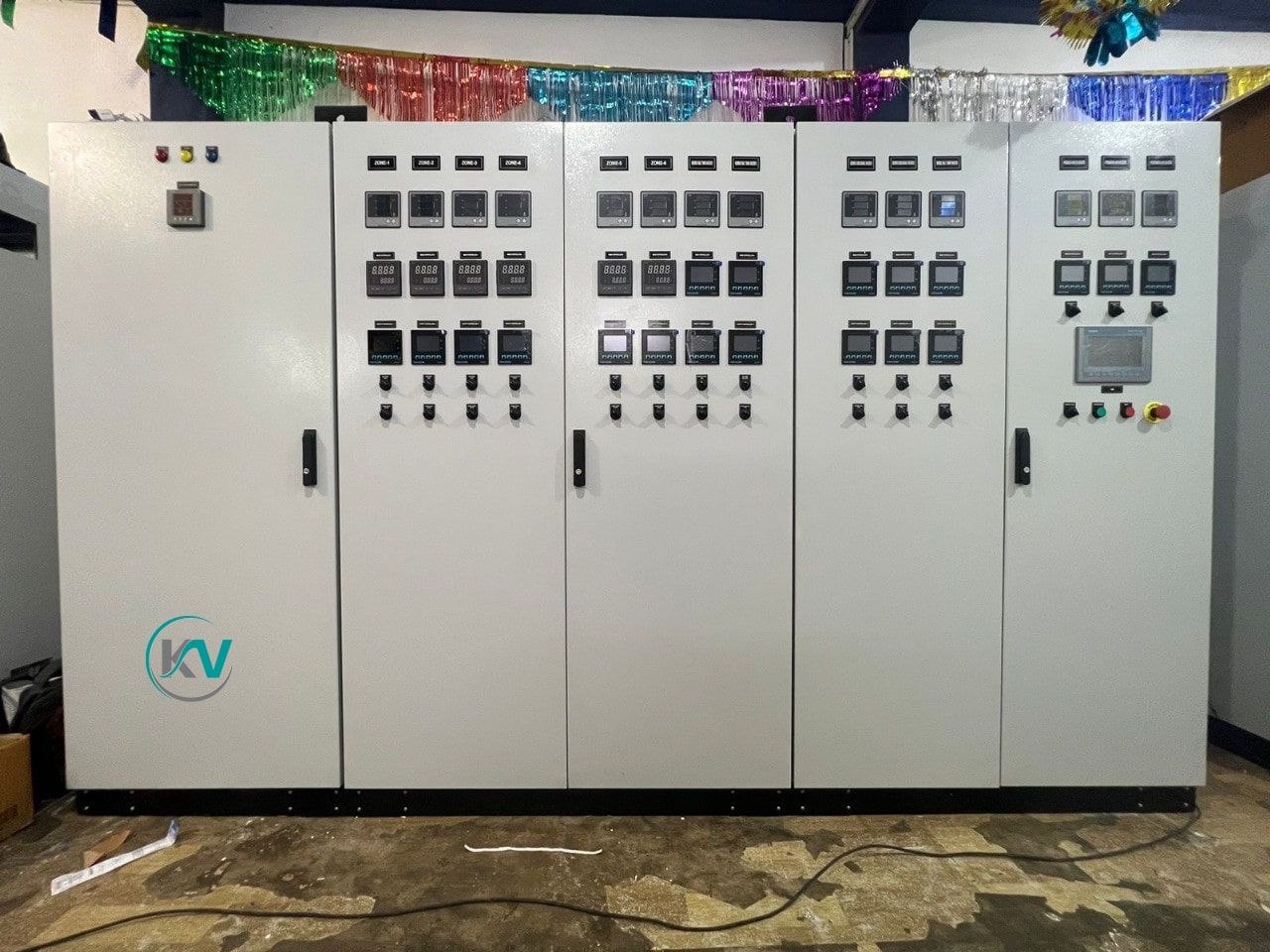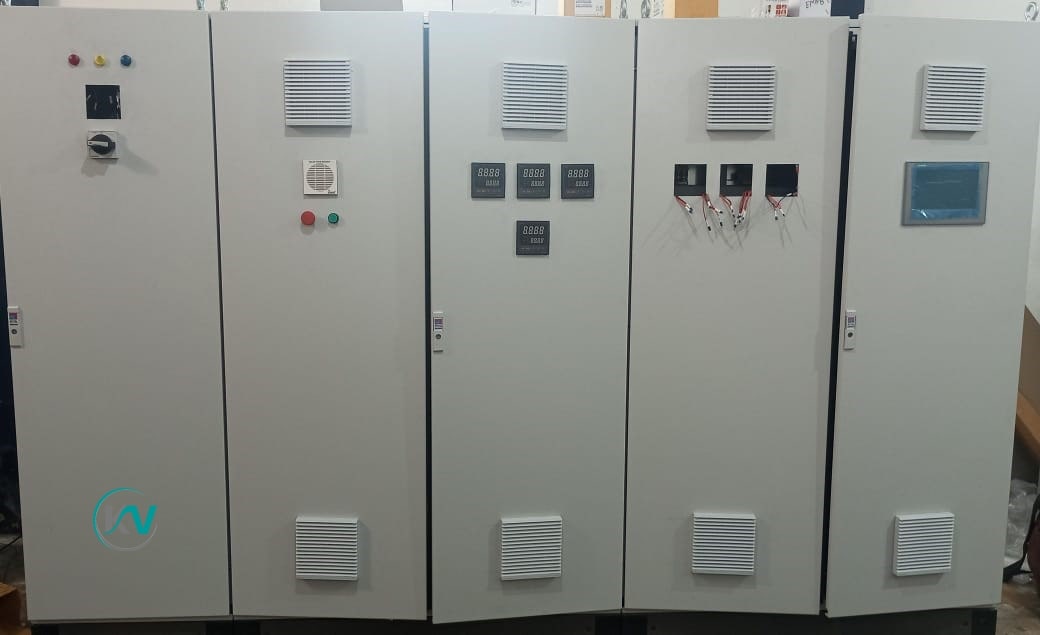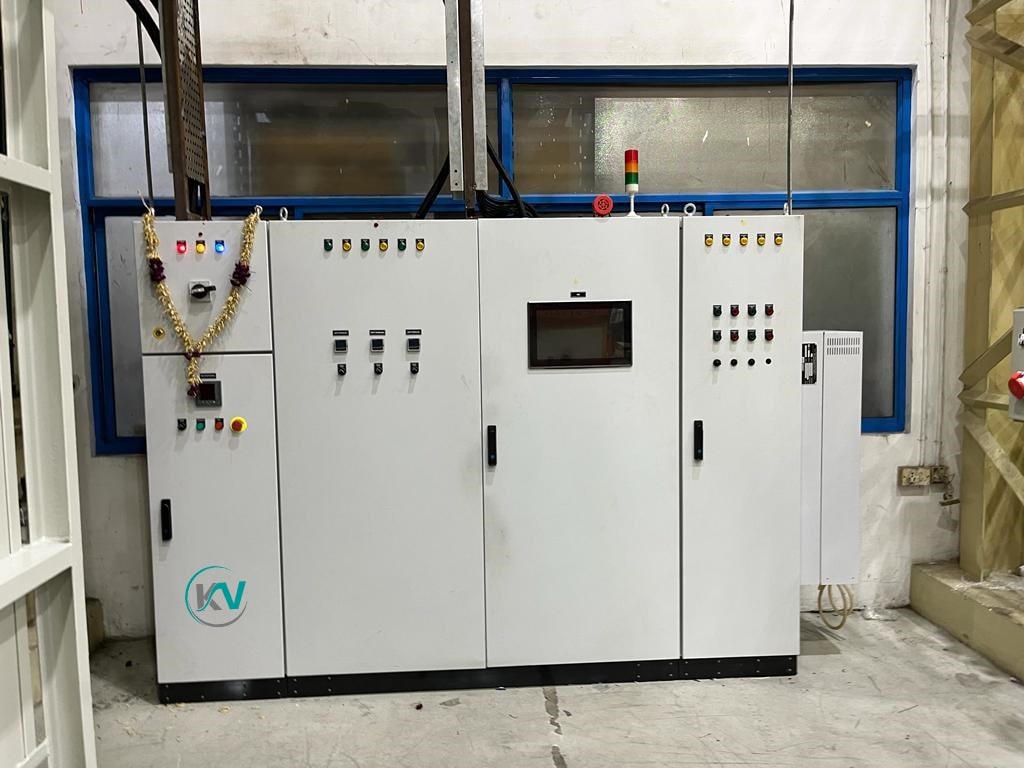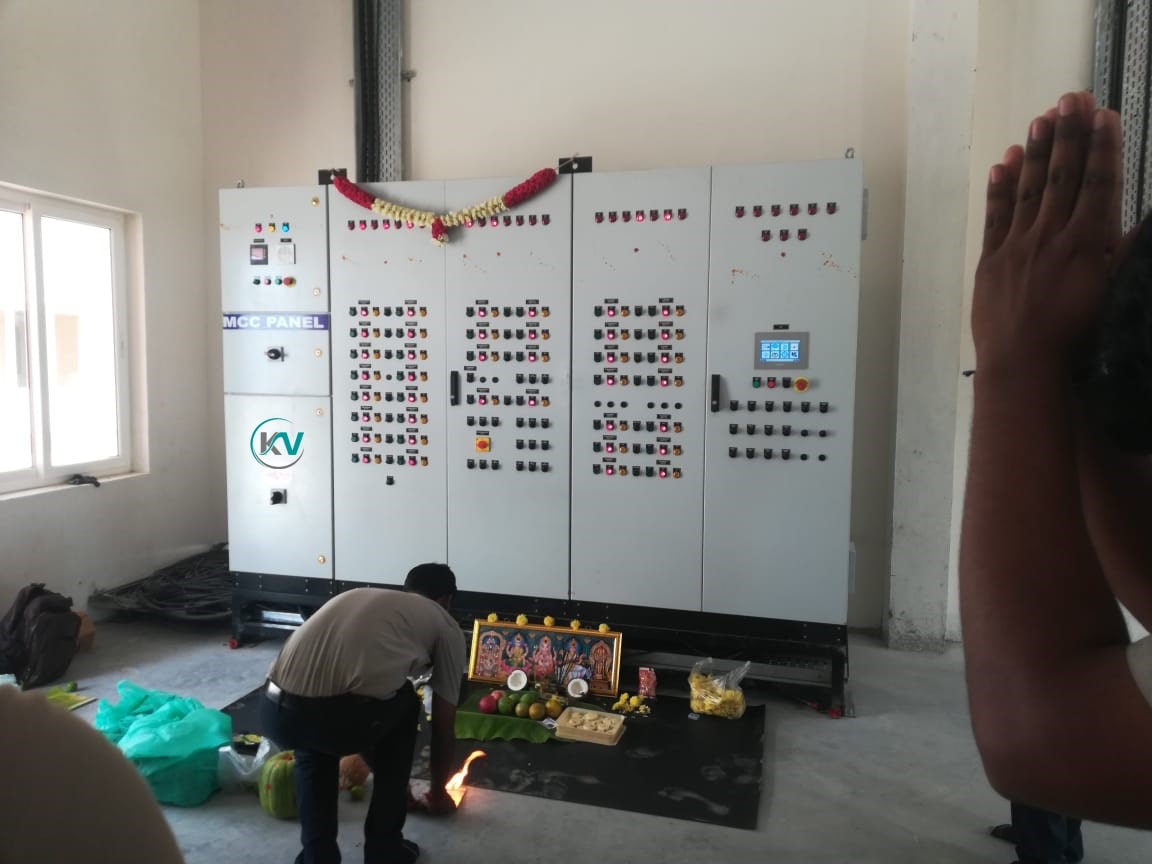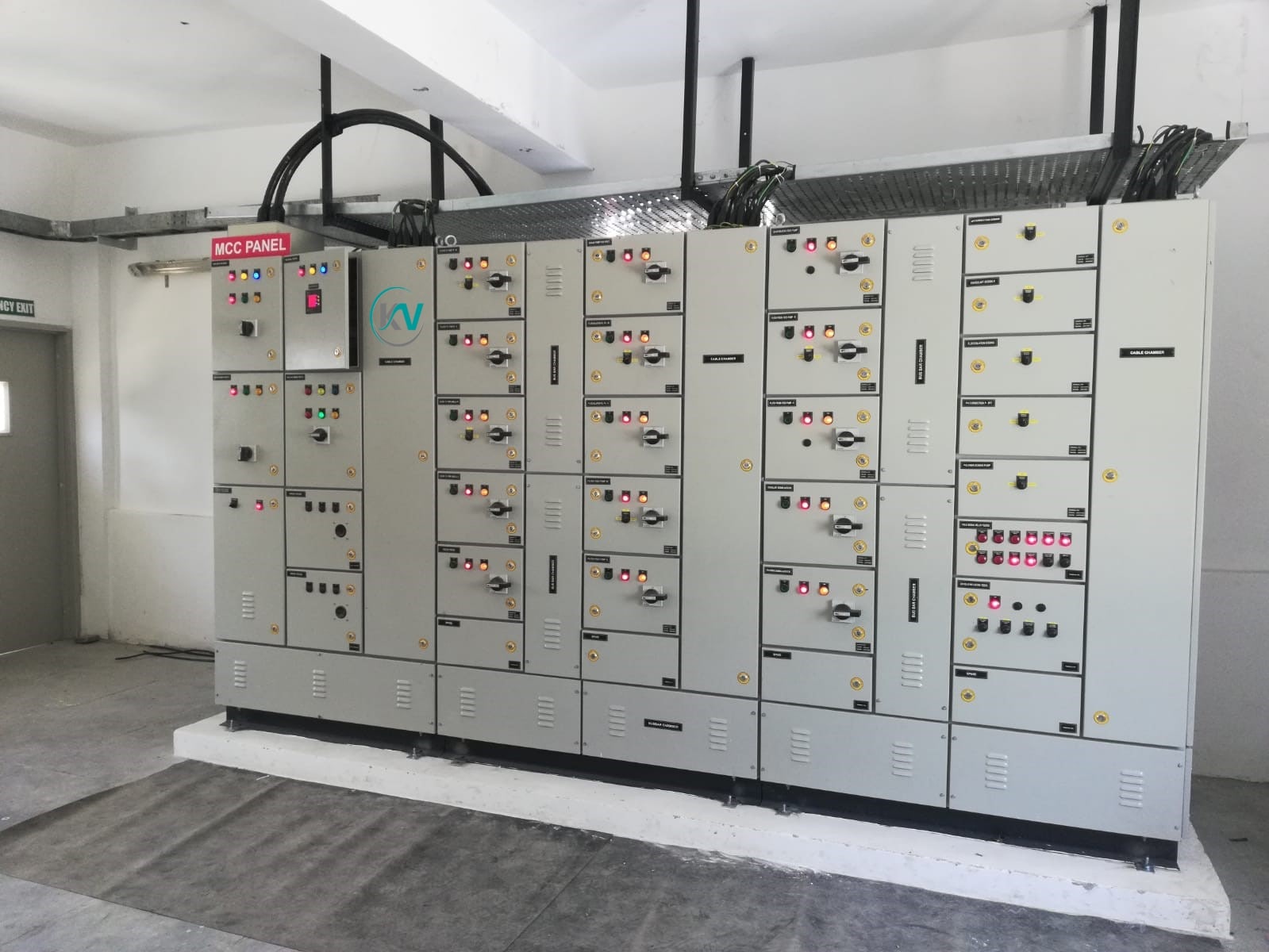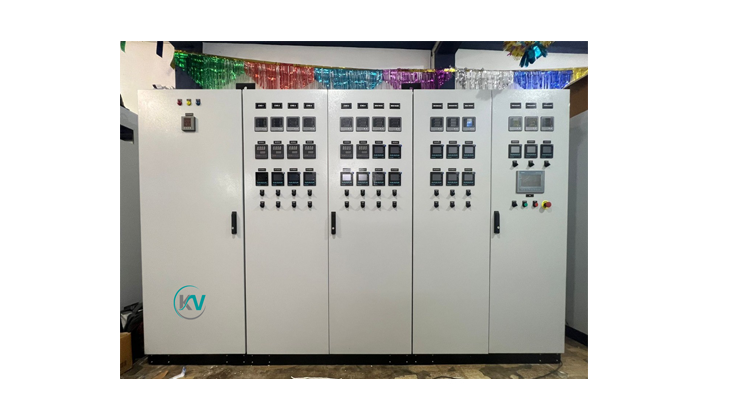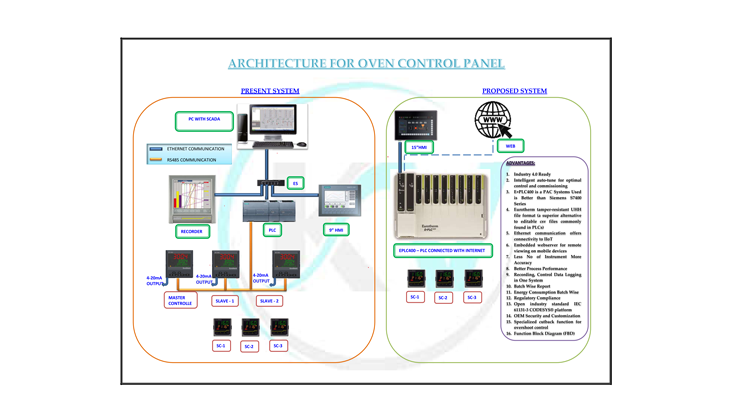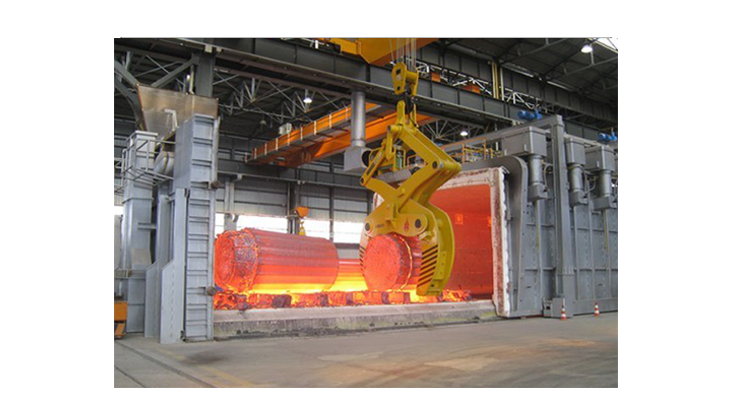We are delighted to introduce KV SMART SYSTEMS, a company founded and led by technically qualified women entrepreneurs with over 8 years of experience in the fields of Industrial Automation, Instrumentation, and Design.
Read More
1.Food Processing & Preparation
Automated Cutting and Slicing: Machines equipped with sensors and robotic arms cut and slice meats, vegetables, and other ingredients precisely and consistently.
Mixing and Blending: Automated mixers and blenders ensure uniform mixing of ingredients, reducing human error and ensuring product consistency.
Cooking and Baking: Automated ovens, fryers, and steamers control temperature and cooking times precisely, resulting in consistent product quality.
- Filling Machines: Automated systems fill bottles, cans, jars, and other containers with liquids, pastes, or solid food products, ensuring precise quantities.
- Sealing and Capping: Automated sealing and capping machines secure lids and seals on containers, ensuring product freshness and preventing contamination.
- Labeling: Automated labeling machines apply labels accurately and consistently, often integrating with quality control systems to ensure correct labeling.
2.Packaging.
- Vision Systems: Cameras and sensors inspect products for defects, ensuring quality and safety by identifying and rejecting defective items.
- X-ray and Metal Detection: Automated systems detect foreign objects, such as metal fragments or other contaminants, in packaged foods.
- Weight and Volume Control: Automated checkweighers and volumetric controls ensure products meet specified weight and volume requirements.
3.Quality Control.
- Automated Storage and Retrieval Systems (AS/RS): Robots and automated systems manage inventory in warehouses, optimizing storage space and retrieval efficiency.
- Automated Ordering and Replenishment: Inventory management systems automatically place orders for raw materials and supplies based on real-time data.
4.Inventory and Supply Chain Management.
- Automated Guided Vehicles (AGVs): AGVs transport raw materials, finished products, and packaging materials within the production facility.
- Robotic Palletizing: Robots stack products on pallets for shipping, optimizing space and ensuring stability.
- Conveyor Systems: Automated conveyors transport products through various stages of production, packaging, and distribution.
5.Distribution and Logistics
- CIP (Clean-in-Place) Systems: Automated cleaning systems sanitize processing equipment without disassembly, ensuring hygiene and reducing downtime.
- Automated Washdown Systems: Machines designed for high-pressure washing and sanitizing production areas and equipment.
6.Sanitation and Cleaning.
- Flexible Manufacturing Systems: Automation allows for quick changeovers and customization, enabling the production of a variety of products on the same line.
- Batch Processing: Automated systems manage batch processing, allowing for the precise production of small batches of specialty products.
7.Customized Production.
- SCADA Systems: Supervisory Control and Data Acquisition systems monitor and control production processes, providing real-time data and alerts.
- IoT Integration: Internet of Things devices collect and analyze data from various points in the production process, optimizing performance and predicting maintenance needs.
8.Monitoring and Data Analytics.
Examples of Automation in the Food and Beverage Industry.
- Automated milking systems, pasteurization, and bottling lines ensure consistent product quality and safety.
- Automated dough mixing, proofing, baking, and packaging systems streamline the production of bread, pastries, and other baked goods.
1.Dairy Processing.
Benefits of Automation in Food and Beverage Industry.
- Automation reduces manual labor, speeds up production processes, and minimizes downtime
- Automated systems ensure uniformity in product size, weight, and quality.
- Automation reduces the risk of contamination and workplace injuries, ensuring a safer environment for workers and consumers.
- Reducing labor costs and minimizing waste leads to significant cost savings.
- Automated systems can easily be scaled up to meet increased demand.
- Real-time data and analytics enable informed decision-making and continuous improvement.
1.Increased Efficiency:
2.Consistency and Quality:
3.Enhanced Safety:
4.Cost Savings:
5.Scalability.
6.Data-Driven Decisions:

Why Creote
Affordable & Flexible
Must explain too you how all this mistaken idea of denouncing pleasures praising pain was born and we will give you complete account of the system the actual teachings of the great explorer.
- Cost-Effective Services
- Helps Reduce Business Risks
- Management of Employee Performance
- Increasing Company’s Agility

Why Creote
Affordable & Flexible
Must explain too you how all this mistaken idea of denouncing pleasures praising pain was born and we will give you complete account of the system the actual teachings of the great explorer.
- Cost-Effective Services
- Helps Reduce Business Risks
- Management of Employee Performance
- Increasing Company’s Agility


